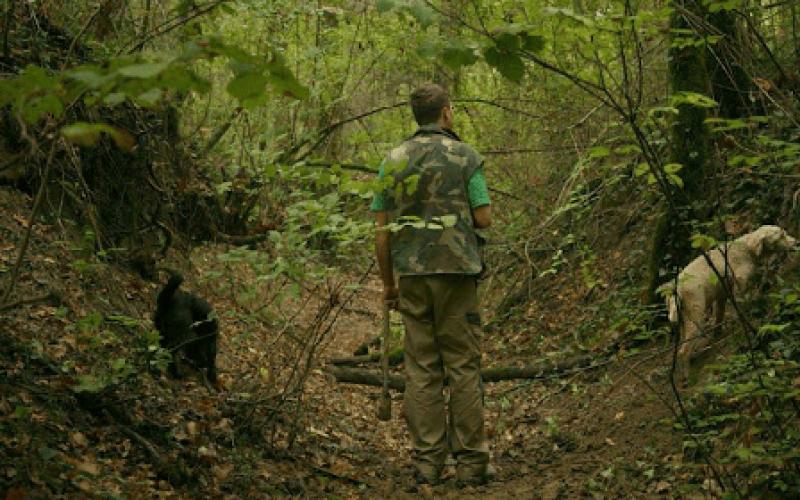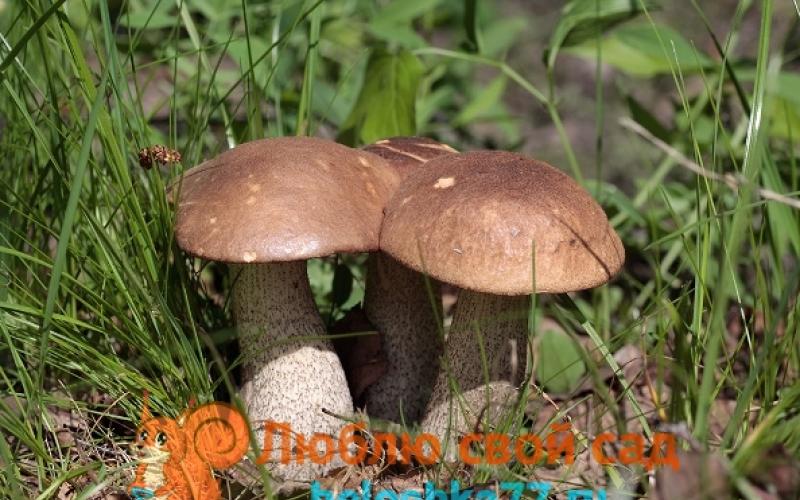And plants of the planet. It is assumed that millions of species of animals and plants have not yet been described. These forests are sometimes referred to as " jewels of the earth" and " the largest pharmacy in the world", insofar as a large number of natural medical remedies have been found here. They are also called " lungs of the earth”, however, this statement is debatable, since it has no scientific justification, since these forests either do not produce oxygen at all, or produce very little of it. But it should be borne in mind that a humid climate contributes to effective air filtration, due to the condensation of moisture on the microparticles of pollution, which has a generally beneficial effect on the atmosphere.
Understorey formation in tropical forests is severely limited in many places due to lack of sunlight in the lower layer. This allows man and animals to move through the forest. If for any reason the leafy canopy is missing or weakened, the lower tier is quickly covered with a dense growth of vines, shrubs and small trees - such an formation is called a jungle.
Spreading
Distribution of tropical rainforests in the world.
The largest tropical rainforests exist in the Amazon River Basin (Amazonian Rainforest), in Nicaragua, in the southern part of the Yucatan Peninsula (Guatemala, Belize), in most of Central America (where they are called "selva"), in equatorial Africa from Cameroon to Democratic Republic of the Congo, in many parts of Southeast Asia from Myanmar to Indonesia and Papua New Guinea, in the Australian state of Queensland.
general characteristics
For tropical rainforests characteristic:
- continuous vegetation of vegetation throughout the year;
- diversity of flora, predominance of dicots;
- the presence of 4-5 tree tiers, the absence of shrubs, a large number of epiphytes, epiphalls and lianas;
- the predominance of evergreen trees with large evergreen leaves, poorly developed bark, buds not protected by bud scales, in monsoon forests - deciduous trees;
- the formation of flowers, and then fruits directly on the trunks and thick branches (caulifloria).
Flora
Trees in tropical rainforests have several general characteristics, which are not observed in plants of less humid climates.
The base of the trunk in many species has wide, woody ledges. Previously it was assumed that these ledges help the tree to maintain balance, but now it is believed that water with dissolved nutrients flows down these ledges to the roots of the tree. Broad leaves are also common in lower forest trees, shrubs and grasses. Tall young trees that have not yet reached the topstory also have broader foliage, which then decreases with height. Broad leaves help plants absorb better sunlight under the edges of the trees of the forest, and they are protected from above from the effects of the wind. The leaves of the upper tier, which form the canopy, are usually smaller and heavily cut to reduce wind pressure. On the lower floors, the leaves are often tapered at the ends so that this facilitates the rapid runoff of water and prevents the growth of microbes and moss on them that destroy the leaves.
The tops of the trees are often very well connected with each other with the help of vines or plants - epiphytesfixed on them.
Other characteristics of the tropical rainforest are unusually thin (1-2 mm) tree bark, sometimes covered with sharp thorns or thorns; the presence of flowers and fruits growing directly on tree trunks; a wide variety of juicy fruits that attract birds, mammals and even fish that feed on the sprayed particles.
Fauna
red-eyed tree frog
In humid tropical forests, there are edentulous (families of sloths, anteaters and armadillos), broad-nosed monkeys, a number of families of rodents, bats, llamas, marsupials, several orders of birds, as well as some reptiles, amphibians, fish and invertebrates. Many animals with tenacious tails live on trees - tenacious monkeys, pygmy and four-toed anteaters, opossums, tenacious porcupines, sloths. A lot of insects, especially butterflies, (one of the richest fauna in world ) and beetles (more than 100 species); many fish (as many as 2000 species is approximately one third of the world's freshwater fauna ).
The soil
Despite the lush vegetation, the quality of the soil in such forests leaves much to be desired. Rapid decay caused by bacteria prevents the accumulation of the humus layer. The concentration of iron and aluminum oxides due to laterization soil (the process of reducing the silica content in the soil with a simultaneous increase in iron and aluminum oxides) stains the soil in bright red color and sometimes forms deposits of minerals (eg bauxites). On young formations, especially of volcanic origin, soils can be quite fertile.
Tropical rainforest levels
The rainforest is divided into four main levels, each of which has its own characteristics, has a different flora and fauna.
The topmost level
This layer consists of a small amount of very tall trees reaching a height of 45-55 meters (rare species reach 60 - 70 meters). Most often the trees are evergreen, but some shed their foliage during the dry season. Such trees must withstand harsh temperatures and strong winds. This level is inhabited by eagles, bats, some species of monkeys and butterflies.
Crown level
The crown level is formed by the majority of tall trees, usually 30 - 45 meters high. This is the densest layer known in all terrestrial biodiversity, a more or less continuous layer of foliage formed by neighboring trees.
According to some estimates, the plants of this layer make up about 40 percent of the species of all plants on the planet - perhaps half of the entire flora of the Earth can be found here. The fauna is similar to the upper level, but more varied. It is believed that a quarter of all insect species live here.
Scientists have long suspected the diversity of life at this level, but only recently have developed practical research methods. It wasn't until 1917 that an American naturalist William Beed(English) William Beede) stated that "another continent of life remains unexplored, not on Earth, but 200 feet above its surface, spreading over thousands of square miles."
Real exploration of this layer only began in the 1980s, when scientists developed methods to reach canopies, such as shooting ropes at treetops with crossbows. Canopy research is still on early stage. Other research methods include balloon or aircraft travel. The science of accessing the tops of trees is called dendronautics. Dendronautics).
Middle level
Between the edges of the canopy-level trees and the forest floor there is another level, called the middle or subceiling. It is home to a number of birds, snakes and lizards. Insect life at this level is also very extensive. The leaves in this layer are much broader than at the level of the canopy.
forest floor
In Central Africa, the Mount Virunga tropical primary forest has an illumination level of 0.5% at ground level; in the forests of southern Nigeria and in the area of Santarem (Brazil) 0.5-1%. In the north of the island of Sumatra, in the dipterocarp forest, the illumination is about 0.1%. Under such conditions, only some mosses grow on rotten trunks and disc-shaped roots; at 0.2% illumination, selaginella and liver mosses begin to occur; at 0.25-0.5% some types Hymenophyllaceae, Commelinaceae, Zingiberaceae, rubiaceae, club mosses and begonias. Far from the banks of rivers, swamps and open spaces where dense, low-growing vegetation grows, the forest floor is relatively free of plants. On this level, rotting plants and animal remains can be seen, which quickly disappear due to the warm, humid climate that promotes rapid decomposition.
Human impact
Contrary to popular belief, tropical rainforests are not major consumers of carbon dioxide and, like other established forests, are carbon dioxide neutral. Recent studies show that most rainforests instead produce carbon dioxide. However, these forests play a significant role in the turnover of carbon dioxide, since they are its established basins, and the cutting down of such forests leads to an increase in the carbon dioxide content in the Earth's atmosphere. Tropical rainforests also play a role in cooling the air that passes through them. So tropical rainforests- one of the most important ecosystems of the planet, the destruction of forests leads to soil erosion, the reduction of species of flora and fauna, shifts in the ecological balance in large areas and on the planet as a whole.
Tropical rainforests often reduced to plantations of cinchona and coffee trees, coconut palms, and rubber plants. in South America for tropical rainforests irrational mining also poses a serious threat.
humid equatorial forests evergreen forests, mainly in the equatorial, less often in the subequatorial belts in the north South America, in Central America, in Western Equatorial Africa, in the Indo-Malay region. In bass. Amazons they got the name of helium, selva. Distributed in areas with annual precipitation of more than 1500 mm, relatively evenly distributed over the seasons. A wide variety of tree species is characteristic: from 40 to 170 species are found per 1 ha. Most trees have straight trunks, columnar, branching only in the upper part. The tallest trees reach heights. 50–60 m, trees avg. tier - 20–30 m, lower - approx. 10 m. Many trees have board-shaped roots, sometimes rising to heights. 8 m. In swampy forests, stilted roots appear on trees. Change of foliage different types trees occurs in different ways: some shed their leaves gradually during the year, others only at certain periods. The emerging young leaves hang as if withered at first, differing sharply in color, which is characterized by a wide range of colors - from white and pale green to crimson and burgundy. Flowering and fruiting also occur unequally: continuously throughout the year or periodically - one or several times a year. Often on one tree you can see branches with fruits, flowers and young leaves. Many trees are characterized by caulifloria - the formation of flowers and inflorescences on the trunks and leafless parts of the branches. The dense crowns of trees almost do not let in sunlight, so there are very few grasses and shrubs under their canopy.
Moist equatorial forest
In the equatorial forests there are many vines, mainly with lignified stems, less often herbaceous. Their trunks reach in diameter. 20 cm, and the leaves are raised to the height of tree crowns. Some creepers, for example. rattan palms rest on tree trunks with short shoots or special outgrowths; others, eg. vanilla, are fixed by adventitious roots; however, most tropical vines are climbing. There are frequent cases when the trunk of a liana is so strong, and the crown is so closely intertwined with several trees, that the tree braided by it does not fall after death.
Epiphytes are very diverse and numerous - plants growing on trunks, branches, and epiphylls - on the leaves of trees. They do not suck the nutritious juices from the host plant, but use it only as a support for growth. Epiphytes from the family bromeliads accumulate water in rosettes of leaves. Orchids store nutrients in thickened areas of shoots, roots or leaves. Nesting epiphytes, eg. ferns "bird's nest" and "deer antlers" accumulate soil between the roots, epiphytes-sconces - under leaves adjacent to tree trunks. In America, even some types of cacti are epiphytes. were exterminated and continue to be exterminated. To date, their area has already halved and continues to decrease at a rate of 1.25% per year. They are inhabited by St. 2/3 of all species of plants and animals on the Earth, many of which are dying, even without being discovered and explored by man. On the site of the destroyed primeval forest, stunted and very species-poor forests from fast growing trees. With regular fires and logging, secondary forests are replaced by savannahs or pure stands of cereals.
Watch value Wet Equatorial Forests in other dictionaries
Forests- Vyat. woodsman, ver. lesetka, lesetka, fishing line, scaffolding, thread or cord on the oud, usually woven from horsehair. , with a hook or fishing rod and a sinker at one end, sometimes with ........
Dahl's Explanatory Dictionary
Forests- forests, forests, pl. woods, w. A long string attached to a rod with a fishhook at the end. broke off. Throw the forest into the water.
Explanatory Dictionary of Ushakov
Forests And Forests2 F.- 1. A long strong thread, one end of which is attached to the rod, and a fishing hook is tied to the other.
Explanatory Dictionary of Efremova
Active Measures to Promote Natural Reforestation- - active measures to promote the natural regeneration of the forest include work on sowing seeds, planting seedlings or seedlings in areas that have been unsatisfactorily regenerated ........
Economic dictionary
Bonitet Forest — -
indicator of forest productivity, depending on soil and climatic conditions.
Class
quality rating is set according to assortment
tables based on the average........
Economic dictionary
Forest feller— - a worker involved in felling trees.
Economic dictionary
Water Protection Forests- - forests of the 1st group, performing water protection functions. Allocate in the form of restricted areas along the banks of rivers, lakes and other water bodies.
Economic dictionary
Renewal of the Forest — -
the process of formation of a new generation of forests in a natural way under the canopy of a forest stand, in clearings, burnt areas, and other areas that were previously under it. Distinguish
renewal........
Economic dictionary
Forest Flammability Relative- - the value determined by the ratio of the total area of forest fires to the entire forest area (forestry, forestry, etc.).
Economic dictionary
Forest Flammability Actual- - the number of forest fires and the area covered by fire during the fire season.
Economic dictionary
mountain forests- - forests located within mountain systems and individual mountain ranges with fluctuations in the relative heights of the terrain of more than 100 m and an average slope of the surface from the foot........
Economic dictionary
City Forests- - forests located on
lands of urban settlements, within the city limits. Unlike green spaces in squares, boulevards,
streets, etc., not included........
Economic dictionary
Forest Group— - classification
category established for the differentiation of forests according to the main socio-economic and ecological significance, location, carried out by ........
Economic dictionary
Wild and Non-Timber Raw Forest Resources — -
resources of berry plants, mushrooms, fruit and nut trees, shrub species, medicinal plant species, birch sap, honey productivity of linden plantations.
Economic dictionary
Wet Forests- - forests growing on excessively moist
lands with pronounced waterlogging processes.
Economic dictionary
Protective Forests- - natural and artificial forest plantations, reclamation and environment-forming properties of which are used for protection various objects from unfavorable natural ........
Economic dictionary
Forests of Specially Protected Natural Territories (Specially Protected)- - forests of the first group, which have important ecological, scientific, historical meaning, partially or completely withdrawn from economic use, for which ........
Economic dictionary
Forests Possible for Exploitation- - forests of the first, second and third groups, in which
fellings of the main use. They include forests belonging to
forest protection categories of the first ........
Economic dictionary
Forests not included in the Forest Fund- - forests located on defense lands, as well as on lands of urban settlements (urban forests).
Economic dictionary
Deciduous Forests- - groups of forest formations in which the tree layer is formed by trees with large and small leaf blades.
Economic dictionary
Non-wood Products Forests- - food
products, technical and
medicinal raw materials
fodder grasses, as well as furs,
beekeeping products and other types of products, except for wood ........
Economic dictionary
humid equatorial forests - evergreen forests, mainly in the equatorial, less often in the subequatorial belts in the north of South America, in Central America, in Western Equatorial Africa, in the Indo-Malay region. In bass. Amazons they got the name of helium, selva. Distributed in areas with annual precipitation of more than 1500 mm, relatively evenly distributed over the seasons. A wide variety of tree species is characteristic: from 40 to 170 species are found per 1 ha. Most trees have straight trunks, columnar, branching only in the upper part. The tallest trees reach heights. 50–60 m, trees avg. tier - 20–30 m, lower - approx. 10 m. Many trees have board-shaped roots, sometimes rising to heights. 8 m. In swampy forests, stilted roots appear on trees. The change of foliage in different types of trees occurs in different ways: some shed their leaves gradually throughout the year, others only at certain periods. The emerging young leaves hang as if withered at first, differing sharply in color, which is characterized by a wide range of colors - from white and pale green to crimson and burgundy. Flowering and fruiting also occur unequally: continuously throughout the year or periodically - one or several times a year. Often on one tree you can see branches with fruits, flowers and young leaves. Many trees are characterized by caulifloria - the formation of flowers and inflorescences on the trunks and leafless parts of the branches. The dense crowns of trees almost do not let in sunlight, so there are very few grasses and shrubs under their canopy.
Moist equatorial forest
In the equatorial forests there are many vines, mainly with lignified stems, less often herbaceous. Their trunks reach in diameter. 20 cm, and the leaves are raised to the height of tree crowns. Some creepers, for example. rattan palms rest on tree trunks with short shoots or special outgrowths; others, eg. vanilla, are fixed by adventitious roots; however, most tropical vines are climbing. There are frequent cases when the trunk of a liana is so strong, and the crown is so closely intertwined with several trees, that the tree braided by it does not fall after death.
Epiphytes are very diverse and numerous - plants growing on trunks, branches, and epiphylls - on the leaves of trees. They do not suck the nutritious juices from the host plant, but use it only as a support for growth. Epiphytes from the family bromeliads accumulate water in rosettes of leaves. Orchids store nutrients in thickened areas of shoots, roots or leaves. Nesting epiphytes, eg. ferns "bird's nest" and "deer antlers" accumulate soil between the roots, epiphytes-sconces - under leaves adjacent to tree trunks. In America, even some types of cacti are epiphytes. were exterminated and continue to be exterminated. To date, their area has already halved and continues to decrease at a rate of 1.25% per year. They are inhabited by St. 2/3 of all species of plants and animals on the Earth, many of which are dying, even without being discovered and explored by man. On the site of the destroyed primeval forest, stunted and very species-poor forests of fast-growing trees begin to grow. With regular fires and logging, secondary forests are replaced by savannahs or pure stands of cereals.







